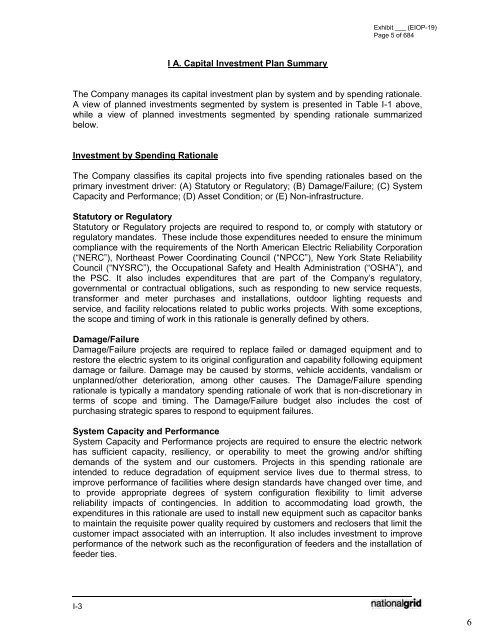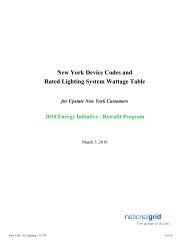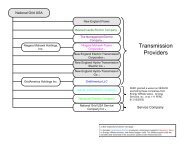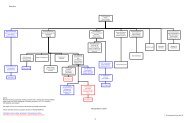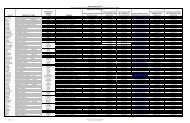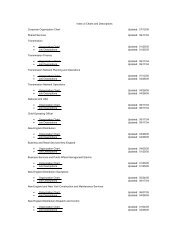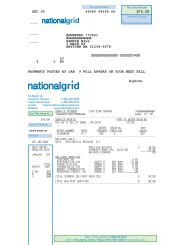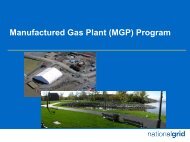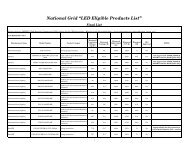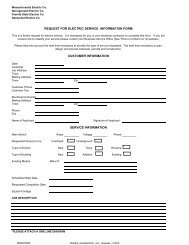January 2012 Capital Investment - National Grid
January 2012 Capital Investment - National Grid
January 2012 Capital Investment - National Grid
Create successful ePaper yourself
Turn your PDF publications into a flip-book with our unique Google optimized e-Paper software.
Exhibit ___ (EIOP-19)Page 5 of 684I A. <strong>Capital</strong> <strong>Investment</strong> Plan SummaryThe Company manages its capital investment plan by system and by spending rationale.A view of planned investments segmented by system is presented in Table I-1 above,while a view of planned investments segmented by spending rationale summarizedbelow.<strong>Investment</strong> by Spending RationaleThe Company classifies its capital projects into five spending rationales based on theprimary investment driver: (A) Statutory or Regulatory; (B) Damage/Failure; (C) SystemCapacity and Performance; (D) Asset Condition; or (E) Non-infrastructure.Statutory or RegulatoryStatutory or Regulatory projects are required to respond to, or comply with statutory orregulatory mandates. These include those expenditures needed to ensure the minimumcompliance with the requirements of the North American Electric Reliability Corporation(“NERC”), Northeast Power Coordinating Council (“NPCC”), New York State ReliabilityCouncil (“NYSRC”), the Occupational Safety and Health Administration (“OSHA”), andthe PSC. It also includes expenditures that are part of the Company’s regulatory,governmental or contractual obligations, such as responding to new service requests,transformer and meter purchases and installations, outdoor lighting requests andservice, and facility relocations related to public works projects. With some exceptions,the scope and timing of work in this rationale is generally defined by others.Damage/FailureDamage/Failure projects are required to replace failed or damaged equipment and torestore the electric system to its original configuration and capability following equipmentdamage or failure. Damage may be caused by storms, vehicle accidents, vandalism orunplanned/other deterioration, among other causes. The Damage/Failure spendingrationale is typically a mandatory spending rationale of work that is non-discretionary interms of scope and timing. The Damage/Failure budget also includes the cost ofpurchasing strategic spares to respond to equipment failures.System Capacity and PerformanceSystem Capacity and Performance projects are required to ensure the electric networkhas sufficient capacity, resiliency, or operability to meet the growing and/or shiftingdemands of the system and our customers. Projects in this spending rationale areintended to reduce degradation of equipment service lives due to thermal stress, toimprove performance of facilities where design standards have changed over time, andto provide appropriate degrees of system configuration flexibility to limit adversereliability impacts of contingencies. In addition to accommodating load growth, theexpenditures in this rationale are used to install new equipment such as capacitor banksto maintain the requisite power quality required by customers and reclosers that limit thecustomer impact associated with an interruption. It also includes investment to improveperformance of the network such as the reconfiguration of feeders and the installation offeeder ties.I-36


